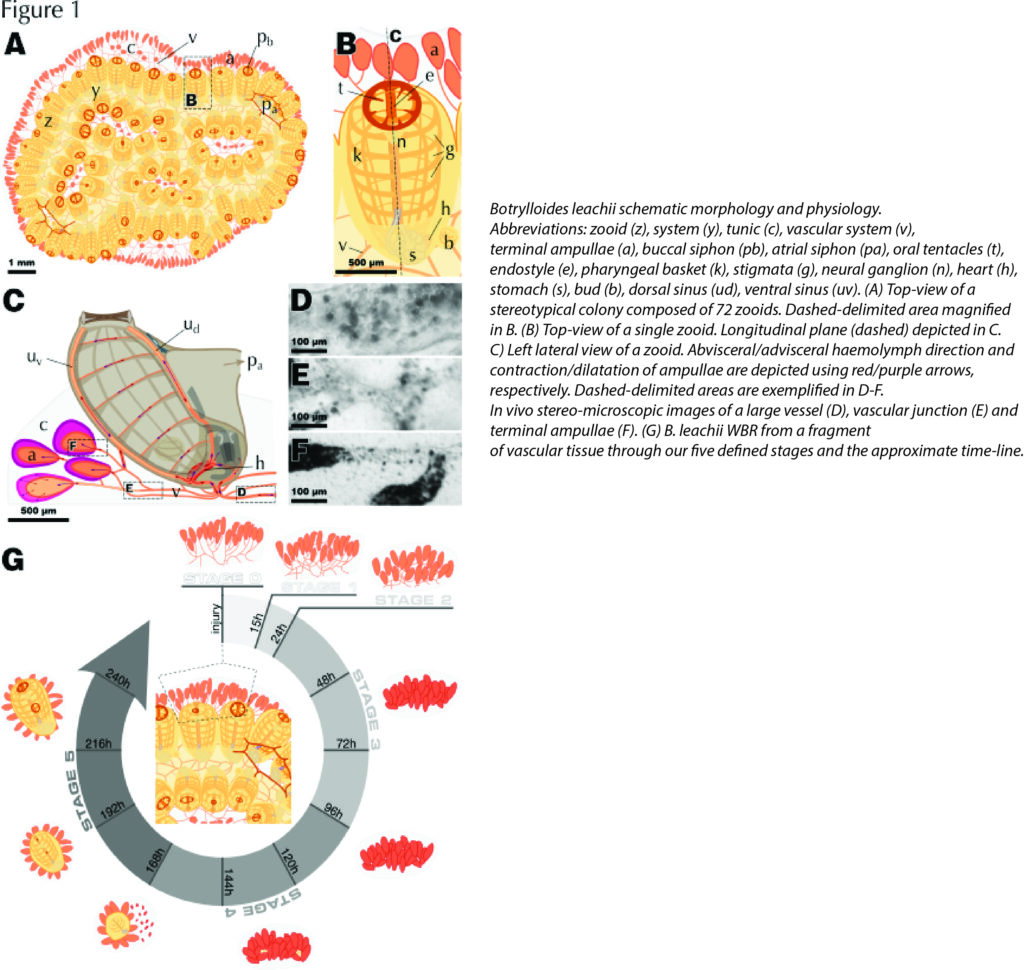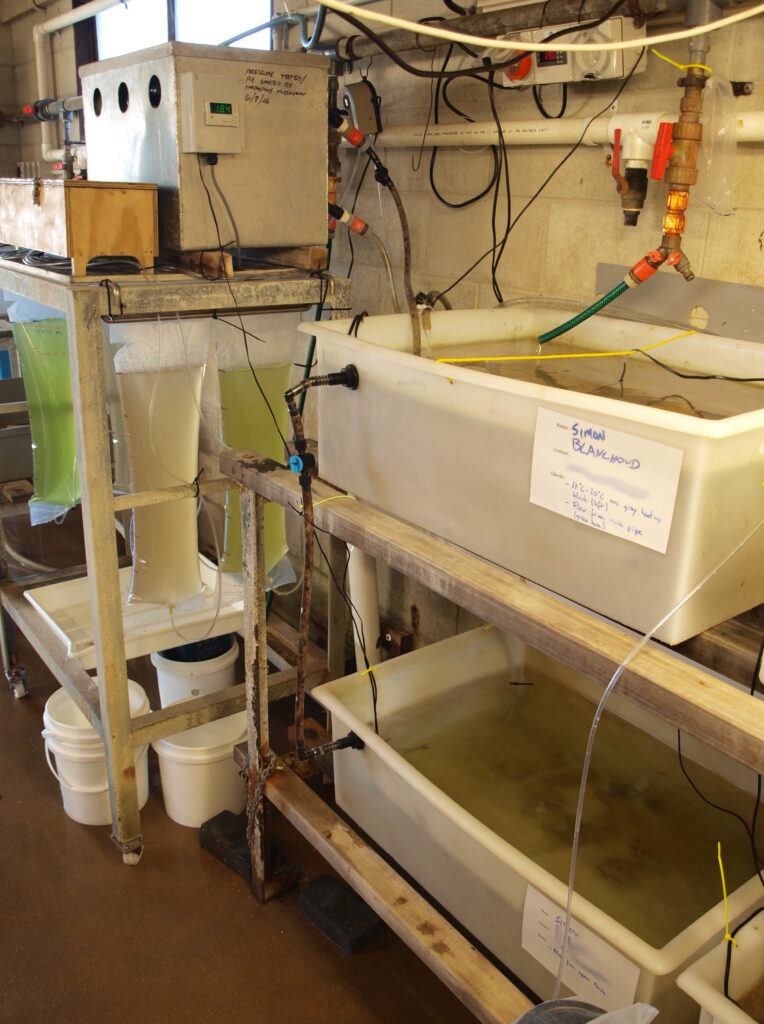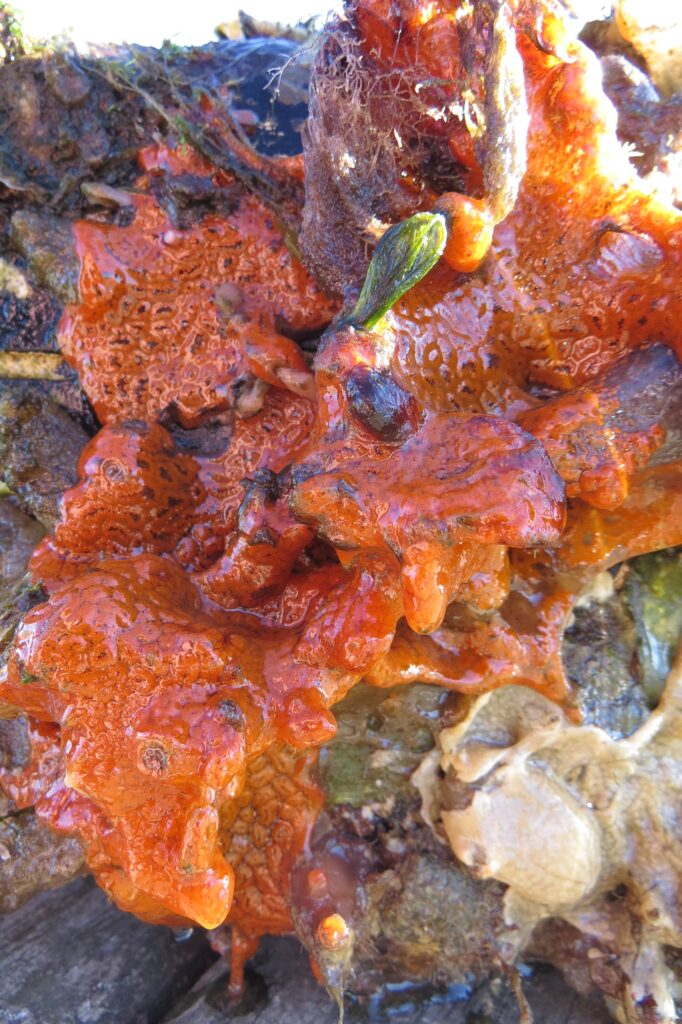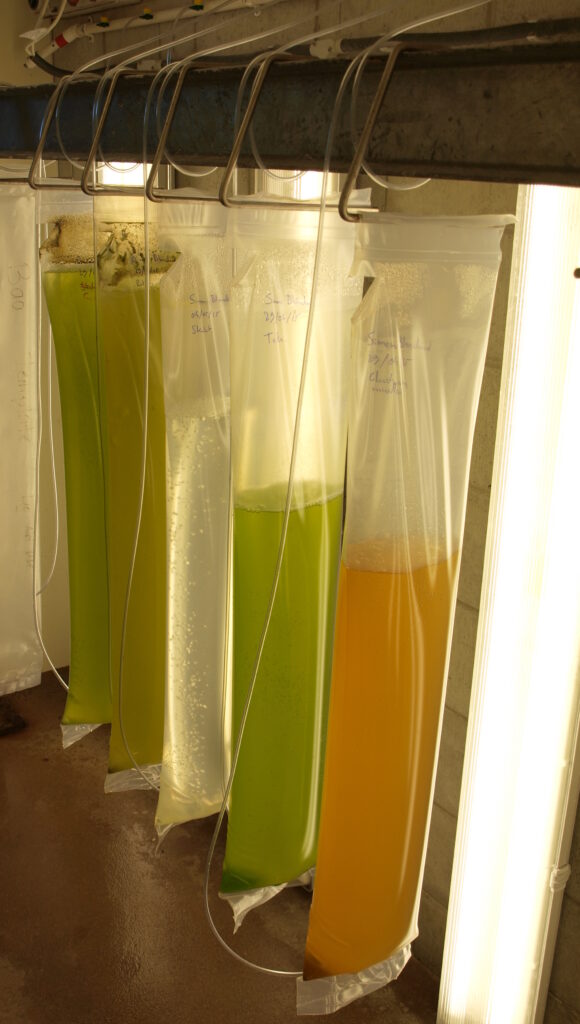Regeneration of a whole new adult in only 8 days: Botrylloides.
- Sea squirts or Ascidians are members of the chordate phylum and are often referred to as our “distant cousins”. They make an excellent comparative model for studying how developmental processes unique to vertebrates may have evolved.
- We also study them as a model for regeneration. Regenerative ability (replace damaged tissue/organs) declines with animal complexity. Regeneration in mammals is limited to only a few tissues such as the skin and liver. In most cases, wounding results in healing and scarring.
- Colonial sea squirts form a colony, with many adults (zooids) embedded in a tunicate (clear cellulose-type matrix). The colony communicates through a vascular system (blood vessels) embedded in the tunicate.
- If we remove everything but just leave a small piece of the vascular tissue – it will regenerate an entire new adult in under 8 days!
We are using a combination of histology, RNA-seq, single-cell sequencing, ATAC-sequencing, genome sequencing, epigenetic studies and cell tracking to study the whole body regeneration process.
In collaboration with Assoc. Prof. Miles Lamare and the Portobello Marine Centre, we have established a B. diegensis colony at the Marine Centre. We can also obtain B. diegensis from the Otago Marina, where it grows naturally.




